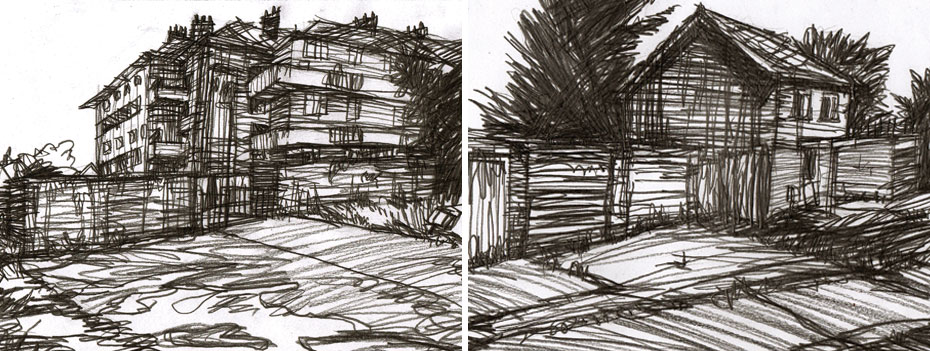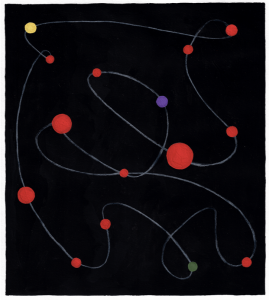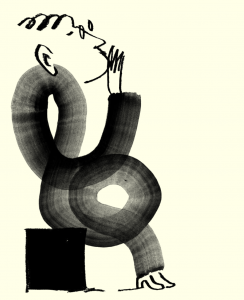Tom Spooner takes us on a physical journey across class-lines and geographical boundaries, demonstrating that in order to really understand our surroundings, we need to abandon conscious direction
Recently, over a number of walks, I spent some time drifting in the suburban non-spaces immediately surrounding my home in Mitcham, South London. The idea was to walk purposelessly which, in this day and age, seems almost absurd. What motivated me to engage in this unusual practice was the desire to undermine the logic that dictates our allocation of economic activity, of ‘acceptable’ organised leisure time, including walking.
In 1950s Paris, Guy Debord and the Situationists engaged in a similar activity they called psychogeography. Over a period of two decades they devised a complex array of theories and schemata, including psychogeography, to overcome the thresholds of modern civilisation.
They didn’t succeed, but they did lay the groundwork for something quite pertinent to our understanding of the 21st century metropolis.

Psychogeography – that is, the disregarding of logical patterns of movement and reason to traverse areas of the city – seeks to break, or at least momentarily sabotage, the hyperreal experience that governs our daily lives. By exploring those spaces where we have never been (and have no business being) we can exploit the psychosocial boundaries imposed upon us by the conditions of the city, and begin to restore some level of autonomy to our lives.
“It was as though this network of interconnected pathways was being used covertly by the miscreants of the local populace to usurp the landscape”
So in a conscious effort to disorientate myself within my own locale, I set about a form of mental cartography, emotionally remapping the terrain, and unearthing the uncanny in the familiar, mundane, and everyday. It didn’t take long to lose myself, both consciously and geographically. In a large woodland, not ten minutes walk from my flat, I found a scattering of decaying buildings serving no obvious purpose. Their roofs, giving way in part and exposing raw timbers, were covered in a thick fur of lush green moss. Their boarded up exteriors were covered in graffiti and overgrown verandas were littered with empty beers cans, a gentle reminder of my own misspent adolescence, but an effective use of the space for underage drinkers I mused.
Clambering through thick undergrowth, pursuing faint leafy trails, I attempted to circumnavigate parkland and define its borders. This was not easy as the boundaries had become blurred by dense patches of shrubbery which proved to be impenetrable. Nearby, house owners had claimed patches of wasteland, erecting cheap DIY extensions and extending their back gardens to the bank of a small brook trickling through the wood. Similarly, the woodland was also encroaching on built up areas: a row of seemingly derelict warehouses backed onto the park, an empty car park, a plot of walled-off garages that had long-since fallen into disuse, their doors buckled and shattered. All were choked with weeds growing unchecked, and vandalised in some way, or showing signs of forced entry. Such frustration and boredom had evidently driven people to these mindless acts, yet it was a poignant moment, for all was very still now, and there was a certain charm in the slow decay.

Just north of the park, on a main road I knew well, I encountered some urban redevelopment in progress, a block of flats or a multi-storey car park – I couldn’t tell which at this point. For me, this simply made the cracks in the fabric of society, through which all the bile of the city had retreated, all the more apparent. A series of alleys and passages led me away. Their walls, covered in scrawl, screamed of psychotropic madness rising to the surface. The words, “TAKE ACID!”, daubed in red paint, cried above the rest.

Pushing onwards, clusters of 1950s council estates rose above the suburban heartland, demarcating the contours of gang-controlled borders. Desolate hinterlands occupied the liminal spaces between them. Here, was a deserted recreation ground. Here, a half-vacant trading estate, accumulating leaf litter. Here, a tired-looking patch of greenery, spoilt by fly-tippers. I navigated a passage through this no man’s land of alleys and cut-throughs, defined by concrete and barbed wire, which became a series of less travelled paths of trampled grass and brambles. All ended back at the estates. It was as though this network of interconnected pathways was being used covertly by the miscreants of the local populace to usurp the landscape. Utilising these spaces, to evade police control and conduct their illicit business, people here, consciously or not, had long been engaging in psychogeographical activity before I ever arrived.
My ruminations were of course subjective. However, each time I returned home, I felt I had unravelled a small part of the spirit within these spaces. An abstract concept from the outset but by extracting myself from banal everyday situations, and walking purposelessly, I came to realise it is the only way we can truly read the landscape.
I knew, returning to the obligations of economic necessity, I certainly wouldn’t look at a deserted football court, or a poorly lit alley, in the same way again.
Tom Spooner




